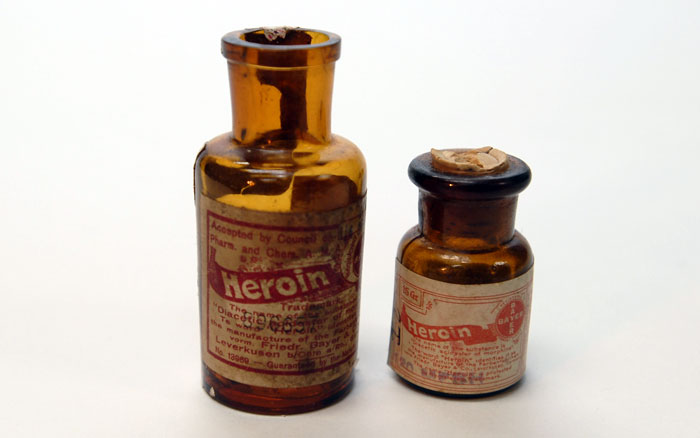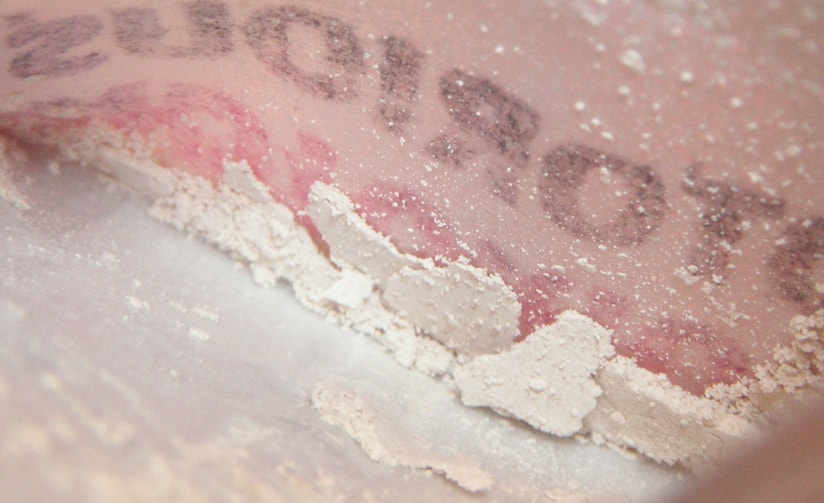Heroin is an opioid with a relatively brief history. Opioids, derived from the opium poppy, have a history going back thousands of years. Many ancient and indigenous civilizations used the opium poppy’s psychoactive effects for recreational purposes, as medicine, and in religious rituals. Hyppocrates, an Ancient Greek physician known as the “Father of Medicine,” specifically recommended the opium poppy to deal with sleep problems and to treat pain. The plant was cultivated as far back as 3400 BC in lower Mesopotamia. By the middle ages, it had spread to become a staple crop in the Middle East, China, and India. In the 17th and 18th centuries, the opium trade became big business and even led to outright war between Britain and China in the so-called “Opium Wars.”
Advances in technology allowed people to consume the opium poppy in other forms. The development of the hypodermic needle allowed medications to be administered far more precisely and effectively. Morphine and codeine, alkaloid derivatives of opium, were discovered in the early 19th century. For a long period of time, morphine and codeine were used without much regulation. The medical community considered them cure-alls for a number of ailments, including gastrointestinal problems, lung problems, menstrual pain, nervousness, and of course pain. They were not widely considered addictive, though records show they had a high rate of abuse.
It was not until 1874 that diamorphine, which is the chemical name for heroin, was first synthesized, though it did not become popular until it was independently synthesized and commercially marketed at Bayer pharmaceutical company 23 years later. Marketing it as an over-the-counter drug under the brand name “Heroin” (meaning heroic/strong, based on the German heroisch), it was touted as a non-addictive alternative to morphine. Despite that, heroin quickly became the most addictive and widely abused drug on the market.

Regulation soon followed, with heroin becoming prescription-only in 1914 and by 1924 banned entirely. It is now a Schedule I drug in the United States, meaning it has absolutely no recognized medical use and is highly illicit. Nonetheless, heroin abuse remained widespread for much of the 20th century. Many prominent jazz and rock and roll musicians became widely known for their addictions to heroin. The result was that heroin became something of a cultural touchstone. In the 1990s, the unhealthy strung-out look of heroin addicts even became fashionable, with runway models embodying the “heroin chic” aesthetic experiencing high demand.
Heroin, which can be smoked, snorted, or injected, is a highly dangerous and often fatal recreational drug. Heroin, sometimes known as diamorphine, is an opioid drug. Opioids are widely recognized in the medical community as analgesic medications, also known as pain-relievers. While many opioids are legitimately prescribed to treat severe and chronic pain, heroin is by and large considered a purely recreational drug and is therefore illegal throughout most of the world.
When heroin is used, it rapidly produces a feeling of euphoria that lasts for several hours. Users quickly develop a tolerance for these effects and require greater or more frequent doses to achieve the desired high. It is also particularly addictive compared to other opioids, with one study showing that heroin and morphine were widely preferred over hydromorphone, fentanyl, oxycodone, and pethidine; users report that heroin provides the strongest feelings of euphoria and more subjectively positive effects. Unfortunately, the good feelings heroin provides quickly dissipate after a few hours when withdrawal effects set in. Chasing a high that requires ever-higher doses and avoiding excruciatingly painful withdrawal symptoms leads many users to quickly develop an addiction to heroin.
Heroin poses a number of dangers to addicts, from impaired mental function to respiratory depression. Many people suffer health consequences as a result of their chosen route of administration, such as collapsed veins or blood borne illnesses among people who inject heroin. Heroin overdose is the most life-threatening problem, and it can occur among regular heroin users as well as first time users. In 2018 alone, heroin overdoses claimed 15,000 lives in the United States. However, in many ways the most alarming effects of heroin abuse are the actions addicts take to obtain the drug. Heroin addiction can be so intense that many people drop out of life entirely. Signs of heroin abuse include severing relationships with friends and family, getting fired from their jobs, engaging in criminal behavior, and suffering major health consequences.
Heroin use is currently on the rise in the United States, along with other opioid medications. This rise has led to countless overdose fatalities, wrecked communities and families, and inflicted enormous economic damage on the country. Because opioid abuse and its consequences tend to spread throughout communities, this phenomenon is often referred to as an opioid epidemic. While the wide availability of cheap “black tar” heroin has in large part driven the spread of the opioid epidemic, legal prescriptions of synthetic opioids have also contributed. A pharmaceutical industry that encourages overprescribing of medical opioids has led to a rise in addiction and physical dependence. In fact, according to the Centers for Disease Control and Prevention, for every 100 Americans there are 58 opioid prescriptions. When someone has been abusing a prescription opioid like oxycodone for a long enough time, it is likely they will eventually turn to heroin, which is cheaper, easier to obtain — and often far more dangerous.
While opium poppies were originally native to the Mediterranean region, today most opium poppies cultivated for heroin production are grown in Asia and Latin America. The opium poppies are ready to harvest when the petals have fallen off the seed pods. The pods are then split open to remove the opium sap, sometimes known as opium gum. Laboratories, usually located close to the fields where the poppies are grown, begin by extracting morphine from the opium sap. This is done by placing the opium sap in boiling water with lime, which causes the morphine to separate and float to the top. After it is skimmed off, the morphine is then generally shipped off to labs located in the countries that produce heroin. There, laboratory technicians turn the morphine into a base by boiling it with ammonia and filtering it. This process is repeated until a thick brownish substance is formed, which is then shaped into bricks.

Dealers who buy these heroin bricks rarely distribute them as received. Instead, they cut them with other substances to increase their profits. Sometimes these substances are relatively innocuous and only serve to decrease potency and increase perceived quantity. These substances include flour, sugar, starch, and powdered milk. When heroin is weak and dealers hope to increase potency, however, they sometimes add other drugs, including fentanyl and acetaminophen. Users who consume heroin tainted with these other drugs can often experience severe health complications or even overdose as a result of unpredictable drug interactions. By the time heroin reaches a potential user, the nature of the product is deeply uncertain.
Heroin goes by many names. Even “heroin” itself is merely a defunct brand name devised by Bayer. The substance’s chemical name is diamorphine. However, on the street heroin goes by a number of slang names. Part of the reason for this is to prevent detection by authorities. Since heroin is an illicit drug, it is often safer for distributors, users, and anyone in possession of heroin to use alternative names to avoid criminal consequences. People who buy heroin online or on the street often find it marketed under a variety of different names. Heroin, for better or for worse, also has a thriving culture around its use, and is widely associated with music, the arts, and many subcultures. As such, its street names are always rapidly multiplying.
Some of these names include:
While heroin comes in many forms due to differences in the processing process, all heroin produces the same effects and poses similar risks. The differences between the different types mostly amount to different levels of refinement. Certain types of heroin are better suited to certain routes of administration. Some are cheaper or more widely available in certain areas. It is crucial to understand that there is, however, no “safe” formulation of heroin.

This type of heroin, if it’s not obvious from the name, comes in the form of white to off-white powder. It is easy to mistake it for cocaine. However, white powder heroin can be distinguished from cocaine by its bitter taste and vinegar-like smell. While this form of heroin tends to be more highly refined than other varieties, it is not necessarily more potent, as distributors often cut it with other substances, among them lactose, talc, caffeine, and sugar. While white powder heroin can be snorted, this form is most frequently used by people injecting heroin directly. Due to the high temperature at which white powder heroin burns, it is difficult to smoke. It is most commonly available in the eastern areas of the United States. This type of heroin is mostly derived from Mexico and parts of South America.
Originating mostly from Mexico, black tar heroin dominates the market west of the Mississippi, though it is sometimes available on the East Coast as well. This dark substance ranges in consistency from rocklike hardness to a gooey mush. Like white powder, it has a strong vinegar-like smell. Its dark coloration is actually a result of contaminants added to the mix. As a result, black tar heroin is far less refined and pure than white powder heroin. Generally, people using black tar heroin dilute it before smoking or injecting. Due to the high levels of contaminants in black tar heroin, however, people injecting it put themselves at a high risk of skin infections in addition to the usual risks heroin poses.
Produced in Mexico and most commonly available on the West Coast, brown powder heroin has recently seen a surge in popularity, especially among populations like teenagers who would normally hesitate to try heroin. Brown powder, named for its color, is generally less refined and expensive than white powder, but more refined than black tar. Sometimes, however, it is the result of black powder being mixed with additives and crushed to make it easier for users to snort. It is often smoked as well.

Heroin addiction isn’t only debilitating, it is often fatal. Drug overdoses have surpassed automobile accidents as the top cause of premature death in the United States, with heroin being responsible for a large portion of the casualties. Approximately 15,000 people died of a heroin overdose in the United States in 2018 alone, making up a third of all opioid-related deaths. The rate of overdose death is currently 7 times higher than it was in 1999. These deaths have catastrophic consequences, not only taking lives and fracturing families, but also taxing the medical infrastructure of the country and dealing major economic damage to communities. Unfortunately, most of these trends are set to continue, barring unforeseen changes in the availability of cheap forms of heroin.
People who abuse heroin do so because of the euphoric feelings, or high, that the drug provides. This high is the result of heroin activating opioid receptors in the brain. When these receptors are activated, they release large quantities of endorphins and dopamine in the brain and throughout the body. These are the chemicals responsible for the good feelings that heroin produces. They also play important roles in the reward centers of the brain that control motivation and decision-making. Any activity that produces these chemicals becomes reinforced, and because heroin abuse releases such enormous quantities of dopamine and endorphins, it can be difficult after a single use to resist heroin’s draw.
Over time, the brain adapts to the effects of heroin. Opioid receptors increase and the body requires a greater quantity of heroin for users to achieve the desired high. This state of physical dependence can cause users chasing a high to consume heroin at greater frequencies and increasingly higher doses. As they adjust to these doses, the symptoms of withdrawal also become more severe. The need for larger doses to stay high and the aversion to the excruciating withdrawal process leads many people to begin using heroin uncontrollably. Addiction is defined on a wide spectrum, but it is usually said to begin when people begin to face damaging consequences from their heroin abuse or when they find that they are unable to manage their own intake of the drug.

A number of other factors increase the likelihood of addiction developing. Addiction experts surmise that there is a strong genetic component to addiction, due to the fact that many people suffering from addiction have a history of addiction in their families. Addiction also stems from environmental factors. Traumatic experiences, abject poverty, and cultural expectations can increase the likelihood that an individual will engage in drug abuse. People who were exposed to drug use at an earlier age are also far more likely to develop substance use disorders, in part because the developing brain is more susceptible. Drug addiction is also highly correlated with mental health disorders more generally, with many sufferers of mental illness turning to substance use as a form of self-medication that provides short-term relief for symptoms. This can lead to a vicious cycle, since substance abuse tends to worsen symptoms of mental illness, ultimately driving people further into the cycle of addiction. Ultimately, substance use disorder has a higher prevalence among populations who are already disenfranchised and vulnerable.
“How long does heroin stay in your system?” is a common question among people who are beginning the process of quitting. Heroin actually has a relatively short half life of 30 minutes, meaning that after half of an hour the body has already processed and eliminated half of the substance. However, a number of factors influence how long heroin stays in your urine or in your blood, among them age, general health, body fat levels, and the amount consumed. Generally heroin can be detected for several days afterwards. For individuals beginning the process of withdrawing from heroin, the more pertinent question to ask is, “How long does it take to detox from heroin?” Generally, symptoms begin after approximately 6 hours, peak in 1-3 days, and gradually subside after a week. However, because symptoms can be so severe and relapse is highly likely even after successful withdrawal, it is generally best to withdraw at a treatment facility and seek formal addiction care afterwards.
Fortunately, for those ready to get help, addiction treatment for heroin is widely available. Medical detox centers can help individuals withdraw from heroin under safe medical supervision. Inpatient and outpatient treatment centers are invaluable resources for people who are interested in treating their addictions and avoiding relapse. 12-step programs and support groups provide resources and social support systems for anyone looking for recovery from substance use disorder over the long term. Even for individuals with no interest in quitting heroin entirely, harm reduction facilities like safe injection sites can help prevent overdose. Having naloxone, a drug that reversed the effects of overdose, can also prevent fatalities. If they are provided with the necessary resources and support, even the most hopeless heroin addict may eventually choose hope over heroin abuse. While heroin addiction and abuse continues to ravage the country, making use of heroin rehab and harm reduction programs is an important step toward combating this epidemic.